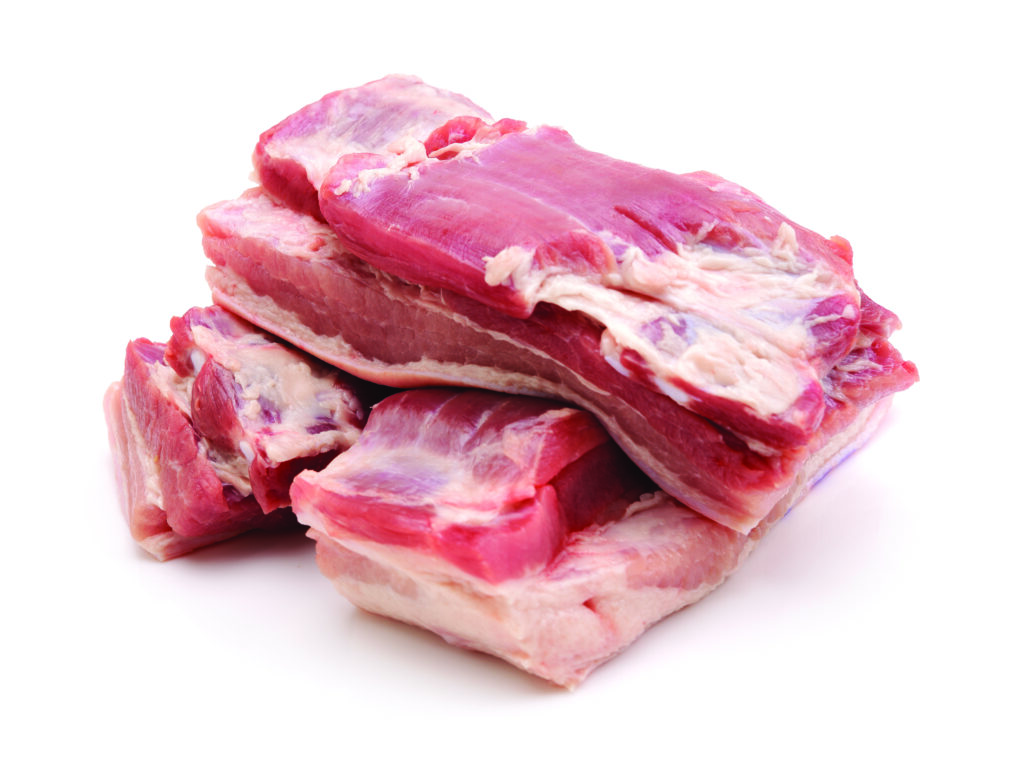In April EU pig meat production fell by 9% on the year to 1.8 million tonnes, according to latest data from the EU Commission.
It is worth bearing in mind that April 2017 had three fewer working days, due to Easter. Therefore, on a like for like basis EU pig meat production in April was 7% up on year earlier levels. However, this should be treated with caution as some abattoirs would have increased their daily kill to compensate for fewer working days. Year to date (January to April) pig meat production is 2% down on the same period in 2016 at 7.7 million tonnes.
EU pig supplies reportedly remained tight in April, with slaughterings for the month falling by 10% on the year to 19.2 million head. However, taking into account the fewer working days this year, slaughterings were 5% up on the year. Carcase weights in April were over 1.6kg heavier than year earlier levels, suggesting producers have been increasing animal weight to offset the tight supply situation witnessed so far this year and the high pig prices.

On an individual country basis nearly all, excluding Hungary, reported an annual fall in pig meat production April. In Germany, the EU’s largest pig meat producer, output fell by 10% on the year in April to 426 thousand tonnes. While it is important to remember the fewer working days during the month, year to date German pig meat production is down 3.2% on the year. Danish pig meat production recorded a smaller loss of 1% on the year in April, with year to date output down 2% on the same period last year at 513 thousand tonnes. Spain is the second largest producer in the EU and production in April was down as much as 15% on a year earlier and no doubt the Easter holidays contributed to this development, as year to date production was only 1% lower.
Separate analysis from AHDB pork shows EU total pig meat exports in May were 19% down on the year at 284.4 thousand tonnes, driven by a sharp fall in fresh/frozen pork shipments to China. However, volumes exported were 9% higher compared to April.
Fresh/frozen pork exports in May were 5% higher than April, but nearly 28% lower than the same month last year, at 163.6 thousand tonnes. However, the value only fell by 12%, to €430 million, as unit prices were higher. In May shipments to China fell by 5% on the month and were a notable 61% lower than May 2016. Furthermore, the value of exports to China fell on the year by 60% to €85.6 million, as the average unit price was only 3% higher. This compares to a 21% rise in the average unit price for EU shipments to all markets.
In contrast pork sales to other Asian markets were strong. In May, Japan remained as the second largest market for the EU, with shipments to Japan rising by 17% on the month and 24% on the year. In euro terms, the value of this trade to Japan increased by nearly 19% on the year. Volume sales to South Korea and Philippines were also up, by 20% and 50% respectively, on May 2016. Shipments to the United States also increased on the year, but by a more modest 15%.

The latest figures take year to date (Jan-May) EU pork export volumes to nearly 890 thousand tonnes, 9% less than in the same period last year. However, in value terms, these exports were over €2.2 billion, 6% more than the same period in 2016.
The EU offal trade performed somewhat better in May with volumes shipped 14.1 thousand tonnes more than in April, at 104.1 thousand tonnes. However, this was 3% lower than the volume shipped in May 2016. Offal trade remains dominated by China and Kong Hong which account for nearly 70% of total EU exports, with shipments rising on the month by 21% and 22% respectively. While Hong Kong was up 11% year-on-year, trade to China actually fell by 22% or nearly 15,000 tonnes. The other major EU market, the Philippines performed well, with trade up on the year by 52%.




